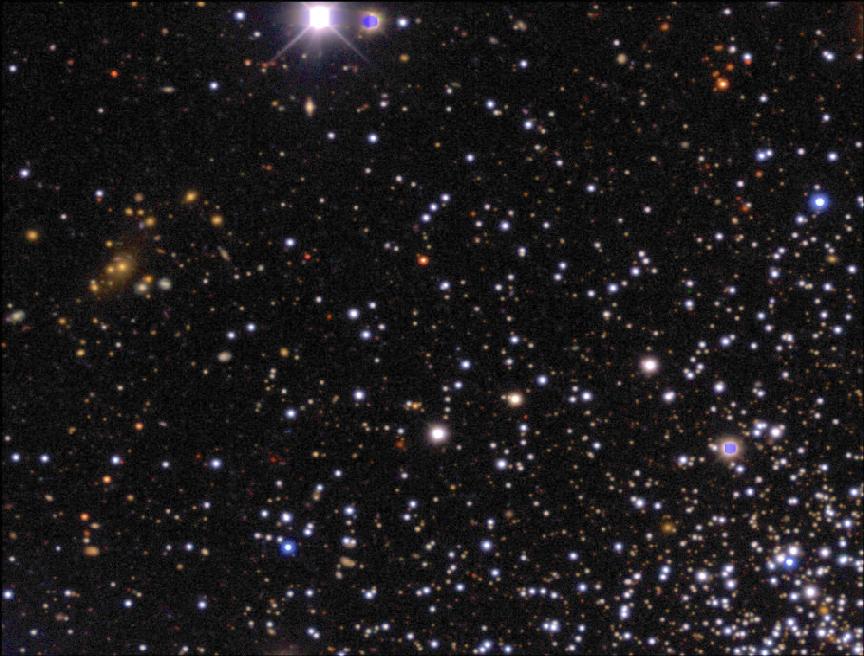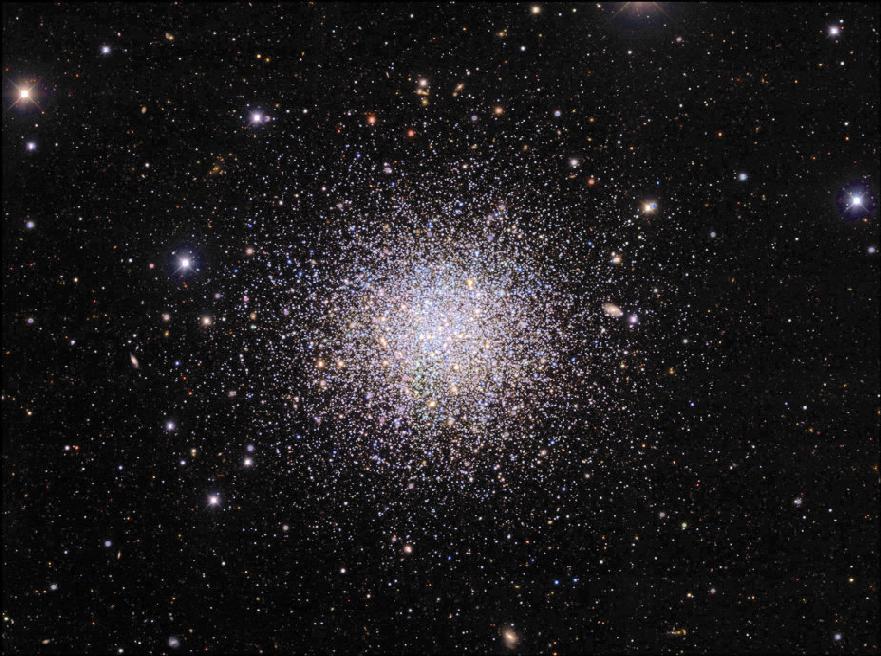

Caption: This 26 arcmin x 21 arcmin image of the globular cluster NGC 288 in the constellation Sculptor is at a distance of 'only' 9 kpc (29,000 light years) from the Sun. That's relatively nearby compared with all other reddish distant galaxies visible in the field (see upper left of inset). Globular clusters are beehives of roughly 100,000 to 1,000,000 stars which were born over a relatively short span of time some 10 to 12 billion years ago. Because all the stars in a cluster are of roughly the same age, 'color-magnitude' diagrams of all the stars in the cluster have characteristic features (main sequence turnoff, giant branches, horizontal branches) which can be used to determine the distance and composition (relative abundance of such elements as Iron compared to Hydrogen) of these objects. Understanding the origins of Globular Clusters is still an area of active research as they provide clues about conditions when the visible universe was still quite young (one or two billion years old) and new Globulars are *not* seen forming today -- they are a dinosaur representative of a time in the Universe's distant past.